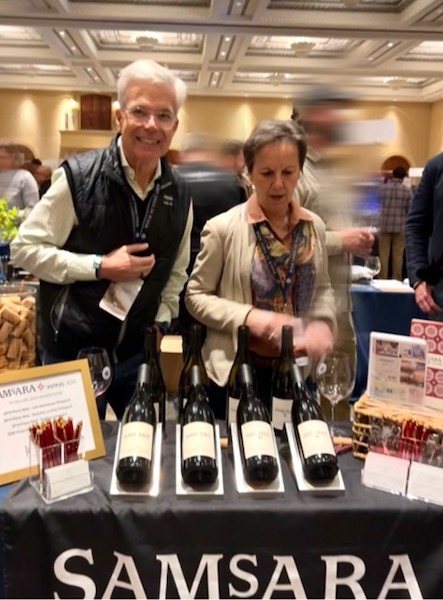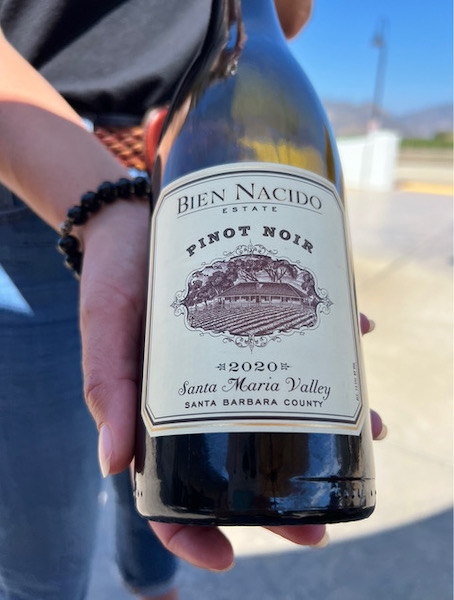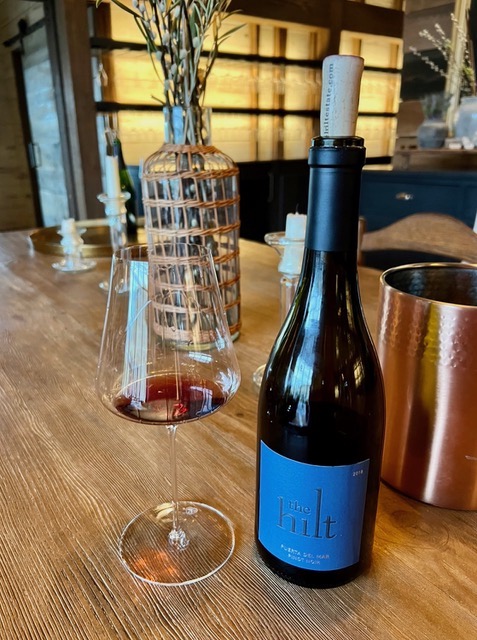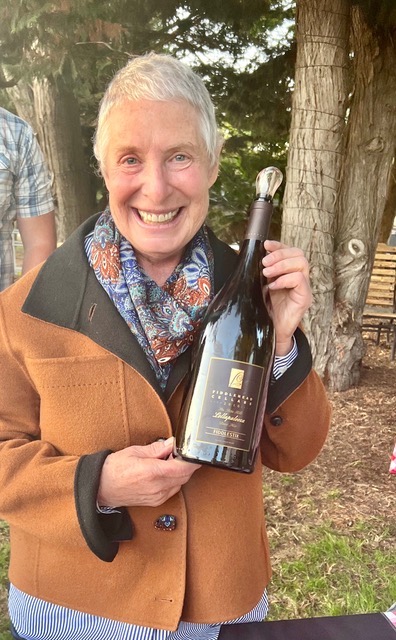Crafting Red Wines and Sipping Santa Barbara’s Pinot Noir

As winter sweeps into Santa Barbara, its crisp touch ignites an irresistible craving for soul warming meals, and the perfect wines to match. Embracing hearty pastas, savory stews, and dishes that stick to your ribs, this season demands the company of bold, full-bodied red wines.
Many of us savor the richness of red wine, understanding its ability to transform an ordinary meal into something extraordinary. But have you ever wondered about the intricate process behind crafting this delectable elixir? Let’s step into the vibrant world of red wine – a blend of ancient traditions and modern innovation, where the vineyard becomes a grand stage for grapes, yeast, and expertise to converge and craft this beverage of delight.
Picture grape picking as the harvest festival of the vineyard, happening during the transition from summer to fall. It’s a meticulous affair, selecting grapes that shift from green to deep hues of red or blue-black during veraison, signifying the onset of ripening. Whether it’s hand-picked or done with the precision of machines, each grape is chosen for its promise of flavor.
At the winery, it’s a meticulous sorting process akin to selecting the finest ingredients for a gourmet dish. Grapes undergo a mesmerizing transformation through a de-stemmer/crusher, extracting the coveted free-run juice. Next, those harvested grapes are all set for the following stage: fermentation.
Here’s where the magic begins. The resulting “must”, a blend of juice, skins, and seeds, takes a plunge into treatments like cold soaking. This isn’t just about color and flavor extraction; it’s the moment where red wines unlock their vibrant hues, lively flavors, and luscious textures through an intimate tango with grape skins during fermentation.
Fermentation is the heartbeat of the process, kickstarted by natural or commercial yeast. Regular stirring is like a passionate dance, ensuring the skins and juice unite seamlessly. When it’s time, the pressing separates the skins and seeds, leaving behind the liquid gold – your future red wine.
But the story doesn’t end there. Red wines aren’t just made, they’re matured like a fine artist refining their masterpiece. It’s the aging process in oak barrels or vats that adds that extra flair. This aging, lasting from months to years, involves an intriguing twist – malolactic fermentation. Here, the wine’s tart malic acid evolves into a creamy lactic acid, a transformation that infuses aromas, flavors, and textures, especially when aged in oak barrels.


However, the traditional path of aging in oak isn’t the only avenue for innovation. Enter some winemakers who’ve dared to take a different route, using stainless steel for aging. This departure from tradition imparts its own unique signature to the wine. Stainless steel offers a pristine environment, preserving the grape’s purity and allowing its natural essence to shine through. The result? A red wine with a more pronounced focus on the fruit, retaining its vibrant acidity and delicate nuances, free from the influence of oak.
The refining touches during maturation – racking, fining, and filtering are akin to a painter perfecting their canvas, refining taste and appearance. And finally, the assembly, the blending of wines from different barrels to create complexity and balance. Filtration, sulfur dioxide adjustments, and bottling mark the finale of this captivating journey, a red wine ready to grace your table, each bottle a testament to the artistry and passion that went into its creation.

In Santa Barbara’s Wine Country, boasting seven distinct AVAs, a cornucopia of red wine varieties awaits, but it’s our pinot noir that claims the spotlight. Its vibrant acidity, nuanced fruitiness, and soft tannins make it an exceptional partner for diverse culinary experiences. Despite the absence of freezing temperatures, the occasional cool evenings in this paradise we call home are perfect for enjoying these delightful pairings, especially when the ambiance calls for crackling fires in our hearths.
Here are a few of Santa Barbara’s esteemed pinot noirs, perfectly paired with exquisite dishes that elevate
their flavors.
Samsara Vineyard Pinot Noir 2019: Bursting with sweet and sour blackberries, dark cherry, sage, and cola, this pinot noir finds its ideal match in a rich wild mushroom risotto. The earthy flavors of the mushrooms intertwine seamlessly with the wine’s complexity, while the creamy risotto enhances its velvety texture.
The Hilt Pinot Noir 2019: Vibrant notes of cherry, violets, cloves, and a hint of white pepper define this spirited pinot noir, making it a perfect companion to a hearty white bean stew. The stew’s robust flavors complement the wine’s depth, resulting in a comforting, flavor-packed experience.
Fiddlehead Cellars Lollapalooza Pinot Noir 2010: Boasting vibrant flavors of dark blackberry, crème brûlée, and subtle vanilla, perfectly complementing grilled salmon. The wine’s richness harmonizes with the delicate fish, enhancing its flavor profile and resulting in a beautifully balanced culinary experience that delights the palate.
Bien Nacido Estate Pinot Noir 2020: Plum, black figs, and brown spice notes characterize this plush wine, harmonizing exquisitely with roasted winter squash featuring sage brown butter and toasted hazelnuts. The nutty richness of the dish complements the wine’s fruity notes, resulting in a harmonious blend of textures and flavors that elevate both the wine and the dish.
As a pescatarian, these curated pairings with Santa Barbara’s esteemed pinot noir are my go-to choices during the winter season. However, pinot noir pairs just as brilliantly with heartier meat dishes, such as a savory herb-crusted pork tenderloin or a classic coq au vin.
As winter wraps its arms around us, let the complex flavors of pinot noir and the culinary symphony of these pairings bring warmth and joy to your table, creating moments worth savoring in Santa Barbara Wine Country’s paradise.







